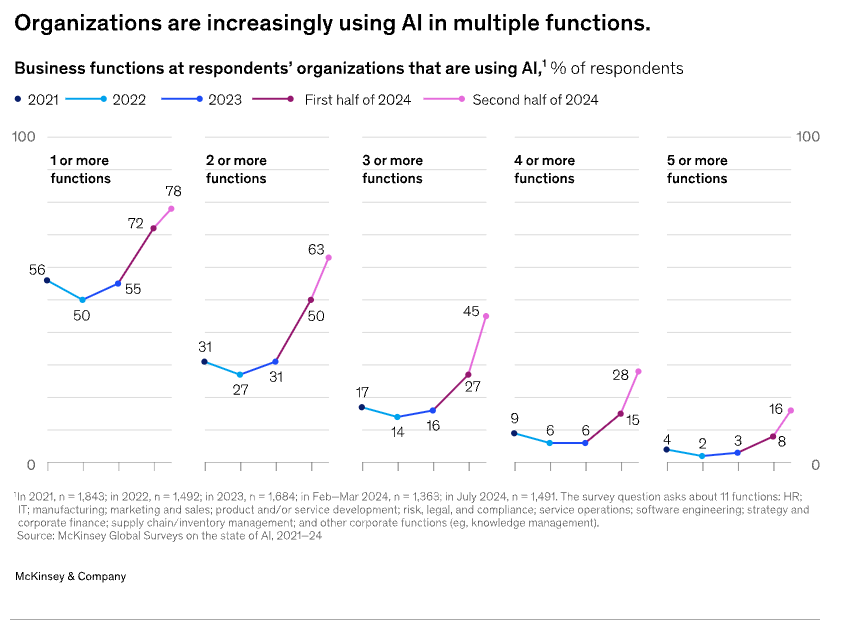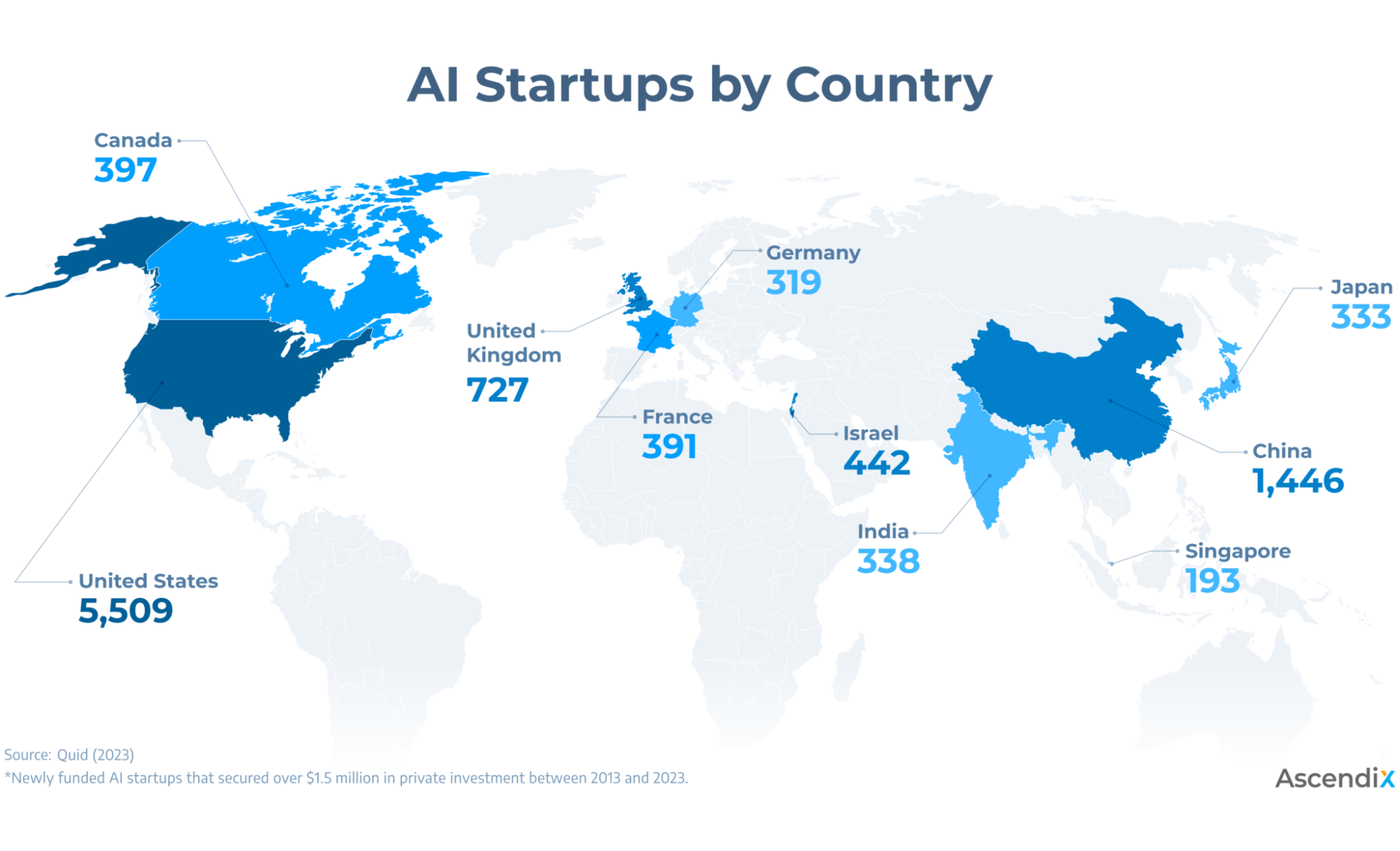Your AI revolution starts with an evolution
AI adoption doesn’t have to be all-or-nothing. Start by automating what your current systems can’t handle.
By Yoav Naveh
Your AI revolution starts with an evolution
You don’t need convincing that AI will change the way we do business because you’ve already seen it change how people communicate and manage their day. The more significant changes that will impact your business’s core systems, operations, and cost base are just around the corner.
What’s less clear is how to prepare for that revolution.
There’s no shortage of options. Some vendors want you to rip out core systems and replace them with something “AI-native.” Others offer point solutions to help you solve one-off problems. Meanwhile, new tools, models, and platforms emerge every week, and the companies around you seem to all be adopting some version of AI.
According to a survey from McKinsey in March of 2025, 71% of companies now use AI in at least one function; a stunning 65% increase from just a few months earlier. You’re probably eager to join them, but you don’t want to make a decision that doesn’t hold up six months from now.

The good news is there’s an alternative approach to ripping and replacing your business’s core systems and cycling through a bunch of point solutions as the market evolves. Instead, approach AI as an evolution so that it’s both useful now and strategic later.
Decision paralysis is understandable but unsustainable
It’s not hard to understand why many teams struggle to make clear decisions about AI. The volume of noise in the market is overwhelming.
According to Ascendix, there are now more than 70,000 AI-centric companies worldwide. Stanford’s AI Index counts over 10,000 AI startups across just the top ten countries, and those numbers are likely to continue growing. In the past two years alone, funding for generative AI has increased eightfold, reaching over $25 billion.

Amongst the noise, legacy platforms are rebranding themselves as “AI-native,” new vendors are promising to replace legacy systems altogether, and point solutions are offering to solve one small problem at a time.
Perhaps you’ve tested a few tools or adopted one-off solutions to stay knowledgeable and avoid falling behind. But you probably don’t want to take a big risk, like replacing a system as central as your ERP, while the market is still evolving. At the same time, you don’t want to cycle through dozens of point solutions, each solving a slightly different problem and creating even more work to manage them.
Many of them were built to solve one specific problem in one specific way. You’ll see tools explicitly built for accounts payable, order entry, or other verticals. But these solutions often expect you to follow their logic, not yours. If you already know how AP should run, you don’t need someone to rethink it; you need someone to execute it. A horizontal approach would build a single foundation that can take on more work as your needs grow, but finding the right one feels impossible with so many options on the market.
Meanwhile, your competitors are already making progress by quietly using AI to deliver better service without replacing their current systems. If you don’t have an AI strategy, they could outpace you.
There’s a smarter way to adopt AI
Instead of trying to overhaul your systems or chase the latest round of point solutions, start by replacing the manual work those systems still depend on. Sometimes that’s the work happening between platforms where humans are moving data from one system to another, matching fields, or resolving inconsistencies. At other times, it’s the work happening within a single system, where humans are completing a process that no software has fully automated, even if it's been in place for years.
This operational glue is what we call connective tissue. It’s the manual layer that keeps the whole machine moving, and in many organizations, it’s where the bulk of the complexity and cost lives.
Perhaps you have multiple ERPs following a series of acquisitions, but rather than consolidating and risking data loss, you use shared services to manually transfer and synchronize information between systems. Or maybe you want tighter pricing controls across regions, but the tools used by each team are inconsistent, so requests get reviewed and routed manually. Even when a system is put in place to fix the issue, it would likely fail to keep up as your business evolves. Eventually, people step back in to patch the gaps, and you're right back where you started.
These are thoughtful, risk-aware decisions, but they come at a cost. If you focus on replacing them with AI that works with your systems like a human would, you’re set up to evolve with AI strategically.
As you adopt AI agents to take over these human-intensive workflows, you’re digitizing logic, codifying institutional knowledge, and reducing the number of vendors your team needs to manage.
What starts as tactical automation becomes strategic readiness, because at some point, you may decide to replace a core system or realize AI is advanced enough to rethink how work gets done altogether. If and when that happens, you won’t be starting from zero. You’ll have an agent that’s already embedded in your workflows, ready to take on more as your needs grow, instead of having to rip out another system or bolt on yet another tool.
How we approach this at Reindeer AI
We build AI agents that take on the operational work your systems still rely on people to do. We don’t replace your current systems; instead, we execute your workflows within them the way a skilled operator would, only faster, more accurately, and without delay.
You can think of it as building an Iron Man suit. The same task, system, and rules are performed at a different scale. The AI agent operates within the same interface, applies the same policies, and returns results that your team can trust.
Our approach is simple: choose one workflow and use a small set of real-world examples (usually 10 to 50 samples) to build a custom AI agent that can handle that process end-to-end. In most cases, the results are visible within weeks.
Some of our recent successes have been:
- Reducing escalation time from five hours to three minutes for a global freight carrier.
- Lowering payment dispute volume by 40% for a tech-enabled 3PL by automating invoice approvals.
- Improving quote turnaround from 48 hours to four for a logistics provider, which doubled their win rate.
In each of these cases, the agent captures the workflow and takes action to complete it. That logic, once digitized, becomes a reusable piece of infrastructure that can be audited, measured, extended, and makes the next agent faster to build.
Partner with an AI company that can grow with you
The most effective way to adopt AI is to start dramatically improving a process you already understand and know well enough to measure. To build momentum, you need a partner who can grow with you, from one system to the next, and one workflow to the next, without starting over each time.
The more you streamline your operations with AI, the more of your manual work becomes automated, documented, and scalable, becoming infrastructure for how your business operates. That foundation is flexible: if you bring on a new system or consolidate platforms, you’re not running a massive migration or hiring people to manage the transition. You’re simply adapting the agent to the new environment, and it can easily push data to new tools, work across systems, and adjust with minimal disruption to your team.
Your business won’t become AI-native overnight, but it can become AI-capable today. We’re here to help you get the job done, whatever the job is, and then help you move to the next one.
.png)


.png)